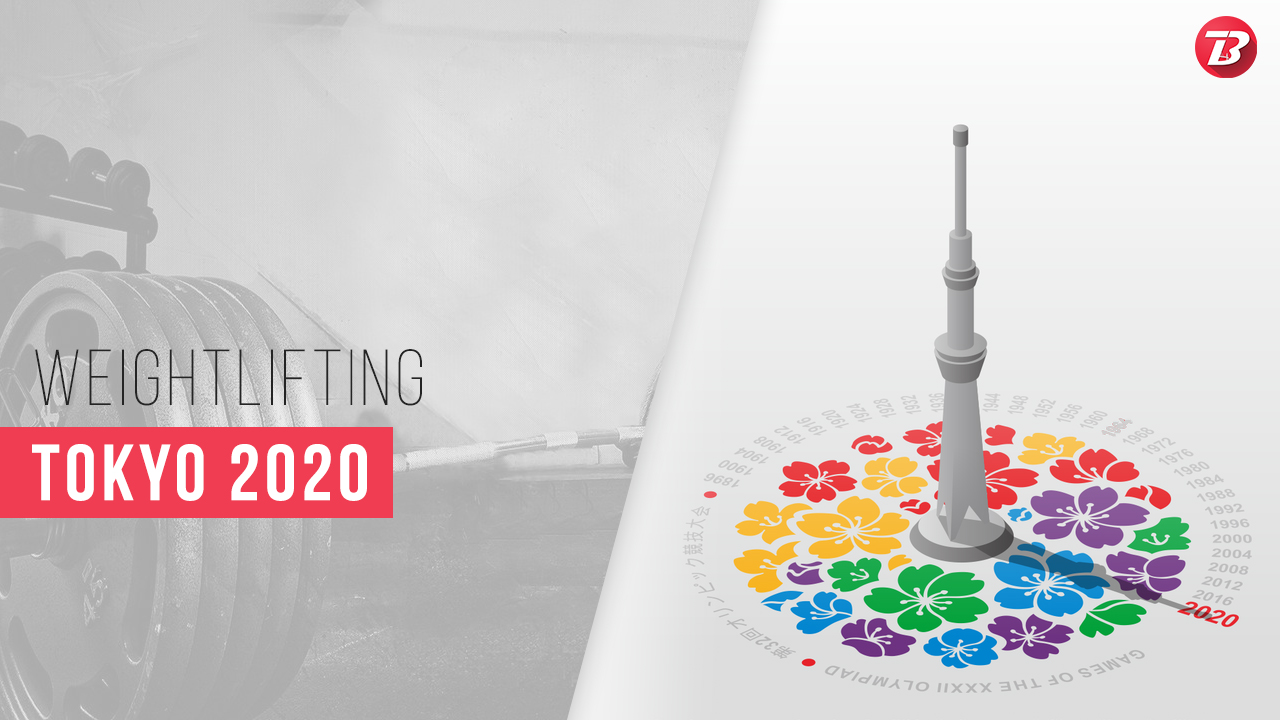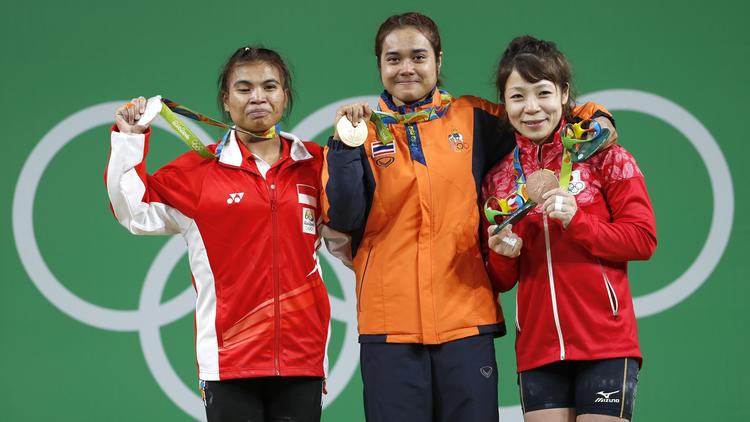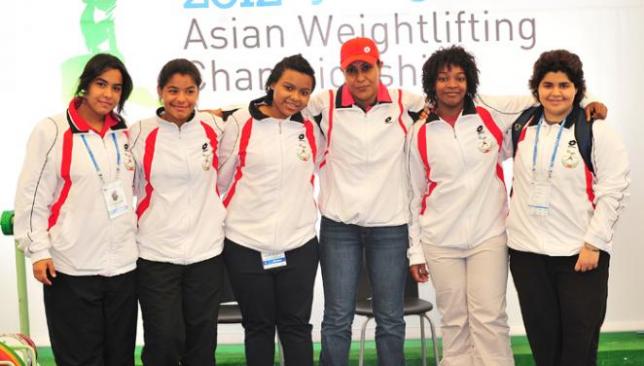Featured
Road to the Olympics: When Weightlifting Olympic qualification was blatantly manipulated

In this two-part series, we will be taking a look at how the qualification system for Weightlifting at the Olympics has evolved over the last few editions. Part 2 of the article will focus on what our lifters have to do to qualify for the Tokyo 2020 Games.
Read Part 2 here.
Until Rio 2016, weightlifting had one of the most eyebrow raising Olympic qualification systems in place. Despite being a completely individual sport, qualification was based entirely on team performance as opposed to individual performance (except for a few slots reserved for exceptional lifters).
Thus, a lifter’s own performance mattered little, and what mattered was how strong one’s country was across the entire sport. Also, team performance was calculated based on a team’s lifters’ placings, as opposed to the actual weight lifted by them.
Further, while a country could send a maximum of only 6 men and 4 women to the Olympics, there were a total of 8 men’s events and 7 women’s events being contested. This meant that, for example, strong nations like China who were capable of winning medals in more than 4 women’s categories, had to pick and choose which categories they wanted to compete in, thus leaving the best lifters from certain categories absent from the world’s biggest sporting showcase that is the Olympics.
While the system was simple to understand, it was also extremely susceptible to being gamed, as was done by the UAE before London 2012.
Overview of the Rio/London Qualification system
 The 48kg podium at the Rio Olympics
The 48kg podium at the Rio Olympics The two world championships prior to the Olympics were the primary Olympic qualification events. At these events, separate team rankings for men and women were calculated by awarding points based on the team’s lifters’ placings in various events. The points awarded were as follows.
| Placing | Points |
| 1st place | 28 |
| 2nd place | 25 |
| 3rd place | 23 |
| 4th place | 22 |
| 5th place | 21 |
| 6th place | 20 |
| 7th place | 19 |
| 8th place | 18 |
| 9th place | 17 |
| 10th place | 16 |
| 11th place | 15 |
| 12th place | 14 |
| 13th place | 13 |
| 14th place | 12 |
| 15th place | 11 |
| 16th place | 10 |
| 17th place | 9 |
| 18th place | 8 |
| 19th place | 7 |
| 20th place | 6 |
| 21st place | 5 |
| 22nd place | 4 |
| 23rd place | 3 |
| 24th place | 2 |
| 25th place | 1 |
So, a lifter winning the Gold (for the total weight lifted, i.e., snatch + clean & jerk) earned 28 points for his team whereas a lifter placing a lowly 25th earned 1 point for his team. A total of 6 lifters per country contributed to the men’s team rankings whereas 4 lifters per country contributed to the women’s team rankings.
On the men’s side, the top 6 nations based on the addition of the team ranking points at the two world championships would earn 6 qualification spots (or “quotas”) each, the next 6 nations would earn 5 quotas each, the nations ranked 13th-18th would earn 4 quotas each and the nations ranked 19th-24th would earn 3 quotas each. Similarly, on the women’s side, the top 9 countries earned 4 quotas each, teams ranked 10th-16th earned 3 quotas each and those ranked 17th-21st earned 2 quotas each.
Once earned, nations could award these quotas to their athletes as they saw fit, with the restriction of a maximum of 2 lifters per category. This also meant that there was no uniformity in the total number of athletes finally competing at the Olympics in each category.
Gaming of the system before London
Before London 2012, UAE managed to completely game this qualification system.
Besides the world championships, quotas were also awarded at continental championships using a similar team ranking system. However, only teams who had failed to earn any quotas at the world championships were eligible to earn quotas through the continental championships. Thus, even the team rankings for the purposes of Olympic qualification would be calculated by ignoring all lifters from ineligible teams and would be based only on the relative placings of the eligible lifters.
So, for example, a lifter placing 5th would normally earn 21 points for his team at the world championships. However, at the continental championships, if the top 4 lifters came from nations that had already earned quotas at the world championships, then this 5th place lifter would earn the full 28 points for his team (equivalent to 1st place).
The big flaws of the system were that only a lifter’s placing in the event mattered, not the actual weight lifted. Further, the total number of eligible competitors in the category did not matter. Thus, one may finish absolute last with a dismal amount of weight lifted, but if that last placing was, say, still 4th or 5th due to a low number of eligible competitors, the lifter still earned quite a few points for the team.
So, it was the Asian Championships 2012 in Korea and, on the women’s side, the top 6 ranked eligible nations would earn one quota each. As with the world championships, the team ranking would be composed of 4 lifters per country. UAE, however, figured out that the higher weight categories in Asia often saw sparse competition. Thus, while other countries put forward their best lifters in a bid of achieve a high team ranking, UAE entered the maximum 2 weightlifters each in the 2 highest weight categories – 75 kg and +75 kg. As it turned out, both the 75 kg and +75 kg categories saw a grand total of only 4 entries each that were eligible for Olympic qualification.
In the +75 kg category, the UAE lifters finished dead last and 2nd last. However, among lifters eligible for Olympic qualification, those placings still amounted to 3rd and 4th, earning UAE a bunch of team ranking points. What’s worse was that Yasmin Abbas, weighing 91.46 kg herself, lifted just 50 kg in snatch and 67 kg in clean & jerk!! Her compatriot Alanood Faraj lifted 45 kg in snatch and 50 kg in clean & jerk. To put these weights in perspective, even the last placed finisher in the lowest 48 kg category lifted more – 60 kg in snatch and 77 kg in clean & jerk, for a total of 20 kg more than Yasmin and a whopping 42 kg more than Alanood!!
 The UAE lifters before the London Olympics
The UAE lifters before the London Olympics The results were similar in the 75 kg category. Khadija Mohammad lifted 50 kg in snatch and 60 kg in clean & jerk to finish 3rd last (but still 2nd among eligible competitors for Olympic qualification), while Latifa Almarri lifted 47 kg in snatch and 50 kg in clean & jerk to finish last (4th for Olympic qualification purposes). They were separated by Turkmenistani lifter Chynar Cherkezova, lifting 48 kg in snatch and 53 kg in clean & jerk. It seemed like Turkmenistan had also considered the UAE strategy, but didn’t go the whole hog and just entered one lifter in the 75 kg category in addition to other, better lifters in the lower weight classes.
So we had a situation where, based on underwhelming lifts far below the lifters’ own bodyweights, UAE managed to secure 6th position on the team ranking and thus earned itself the last quota for the Olympics, pipping Malaysia by a solitary point!
What happened next
Khadija Mohammad competed for UAE at the Olympics in the 75 kg category, lifting 51 kg in snatch and 62 kg in clean & jerk. Her total was 22 kg lower than the last placed finisher in the lowest 48 kg category, and a massive 88 kg lower than the 2nd last placed finisher in her own category! Outside the super heavyweight categories where there is no restriction on bodyweight, she was the only competitor at London, male or female, to even attempt lifts lower than her own bodyweight.
Despite the manipulation, the IWF did not make any major changes to the qualification process for Rio. However, one important change was made. Usually, countries had more lifters competing at World and Continental championships than the 6 men and 4 women required to form the team rankings. In London qualification, every country had to pre-designate the specific lifters who would earn team ranking points, and only the relative placings of these pre-designated lifters mattered. However, for Rio, the rules were changed so that ALL the lifters from eligible nations earned points but only the highest point-earners were considered to form the team rankings.
So, for example, Uzbekistan had a lifter competing in the 75 kg category of the 2012 Asian Championships. However, she was not one of the lifters pre-designated by Uzbekistan as competing for Olympic qualification. As a result, despite placing higher than the UAE lifters, she earned no points while the UAE lifters earned points corresponding to 2nd and 4th places. If the same situation had occurred at the 2016 Asian Championships, the UAE lifters would have earned points corresponding to 3rd and 5th places, as opposed to 2nd and 4th.
The rule change also saw increased competition at the 2016 Asian Championships in Tashkent, the qualifier for Rio. Possibly due to this, UAE did not enter any lifters in the 75 kg category but still entered 2 lifters in the +75 kg category along with other lifters in the lower categories. As expected, their +75 kg lifters lifted abysmal weights and finished last and 2nd last, still earning points corresponding to 4th and 5th places. However, with no lifters in 75 kg, UAE ended up 7th in the team rankings, thus missing out on the 6 available Olympic quotas, but still only extremely narrowly.
Fortunately, Tokyo will see a complete revamp of the qualification process. Team rankings no longer matter and the qualification will instead depend on individual world rankings, determined by the actual weight lifted by the lifters at various IWF designated events. Part 2 of this article will cover this new and improved qualification process in detail.

